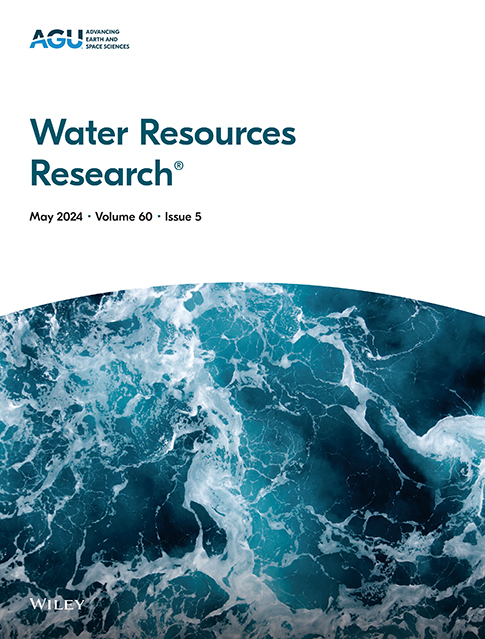The Role of Lithology on Concentration-Discharge Relationships and Carbon Export in Two Adjacent Headwater Catchments
IF 4.6
1区 地球科学
Q2 ENVIRONMENTAL SCIENCES
引用次数: 0
Abstract
Headwater catchments have strong impacts on downstream waterways, near-shore ecosystems, and the quality of water available for growing human populations. Thus, understanding how water and solutes are exported through these upland landscapes is critically important. A growing body of literature highlights the interaction of topography, climate, and the critical zone structure as a key control on streamflow and chemical export. However, more focused work is needed to pinpoint how variability in subsurface structure across lithologically complex regions impacts streamflow and chemical signals at catchment outlets. Here, we aim to better understand how lithology and subsurface critical zones modulate streamflow response and solute export patterns in two central coastal California headwater catchments that are similar in topography, vegetation, and climate but have different lithologies. We monitored streamflow and collected surface water samples at the catchment outlets for dissolved major ions and organic carbon (DOC) for two consecutive water years. The catchment with mélange bedrock displayed much flashier hydrologic behavior with 7.8 times higher peak flow values and 1.9 times higher mean event concentrations of DOC, suggesting shorter and shallower hydrologic flow paths that likely arise from regions of shallower bedrock. Despite distinct hydrologic behavior and DOC export, dissolved major ion concentrations were broadly similar and chemostatic, which may be driven by rapid chemical reactions in the critical zone of both catchments. Our work contributes to building an integrated understanding of how subtle differences in catchment structure can have profound impacts on how water and solutes are routed through headwater catchments.岩性对两个相邻水源集水区富集-排放关系及碳输出的影响
源头集水区对下游水道、近岸生态系统和日益增长的人口可用的水质有强烈的影响。因此,了解水和溶质如何通过这些高地景观输出是至关重要的。越来越多的文献强调地形、气候和临界带结构的相互作用是河流流量和化学物质输出的关键控制因素。然而,需要更集中的工作来确定岩性复杂地区地下结构的变化如何影响汇水口的水流和化学信号。在这里,我们的目标是更好地了解在地形、植被和气候相似但岩性不同的加利福尼亚中部沿海水源集水区,岩性和地下临界带如何调节水流响应和溶质输出模式。我们连续两年监测河流流量,并在集水口采集地表水样品,检测溶解主要离子和有机碳(DOC)。基岩较浅的集水区表现出更为明显的水文行为,峰值流量是前者的7.8倍,DOC平均事件浓度是后者的1.9倍,表明基岩较浅的区域可能产生较短、较浅的水文流动路径。尽管两个流域的水文行为和DOC输出不同,但溶解的主要离子浓度大致相似且化学平衡,这可能是由两个流域临界区快速化学反应驱动的。我们的工作有助于建立对集水区结构的细微差异如何对水和溶质如何通过水源集水区产生深远影响的综合理解。
本文章由计算机程序翻译,如有差异,请以英文原文为准。
求助全文
约1分钟内获得全文
求助全文
来源期刊

Water Resources Research
环境科学-湖沼学
CiteScore
8.80
自引率
13.00%
发文量
599
审稿时长
3.5 months
期刊介绍:
Water Resources Research (WRR) is an interdisciplinary journal that focuses on hydrology and water resources. It publishes original research in the natural and social sciences of water. It emphasizes the role of water in the Earth system, including physical, chemical, biological, and ecological processes in water resources research and management, including social, policy, and public health implications. It encompasses observational, experimental, theoretical, analytical, numerical, and data-driven approaches that advance the science of water and its management. Submissions are evaluated for their novelty, accuracy, significance, and broader implications of the findings.
 求助内容:
求助内容: 应助结果提醒方式:
应助结果提醒方式:


